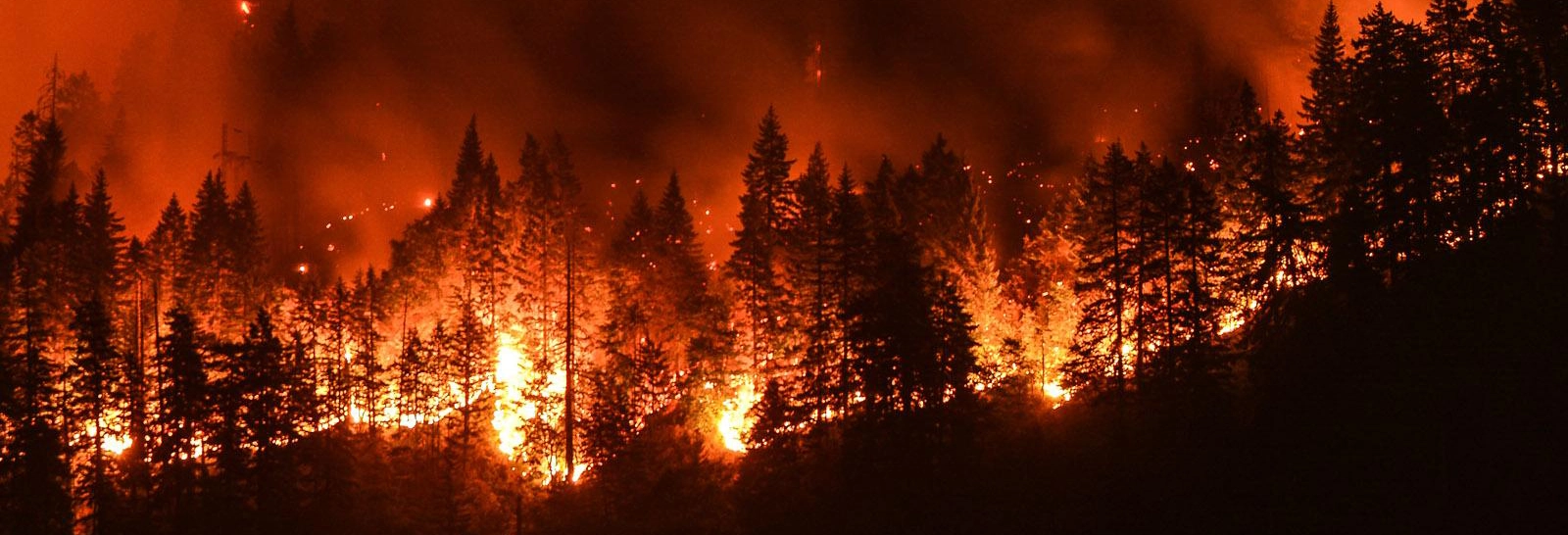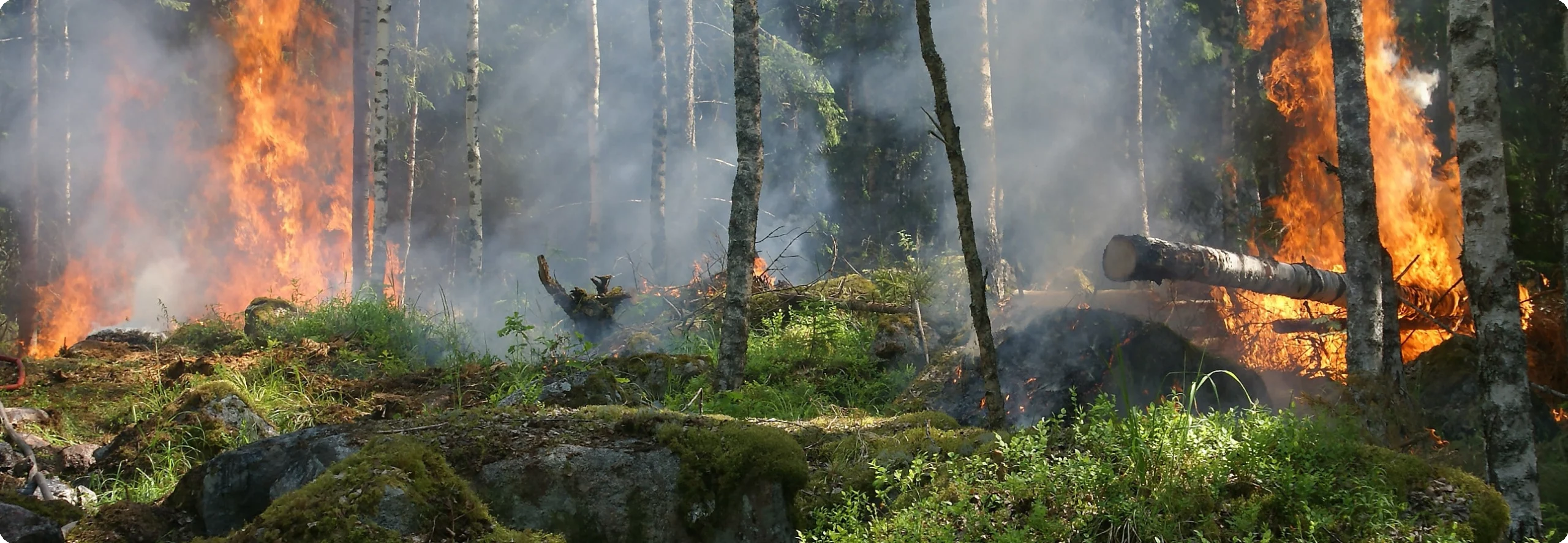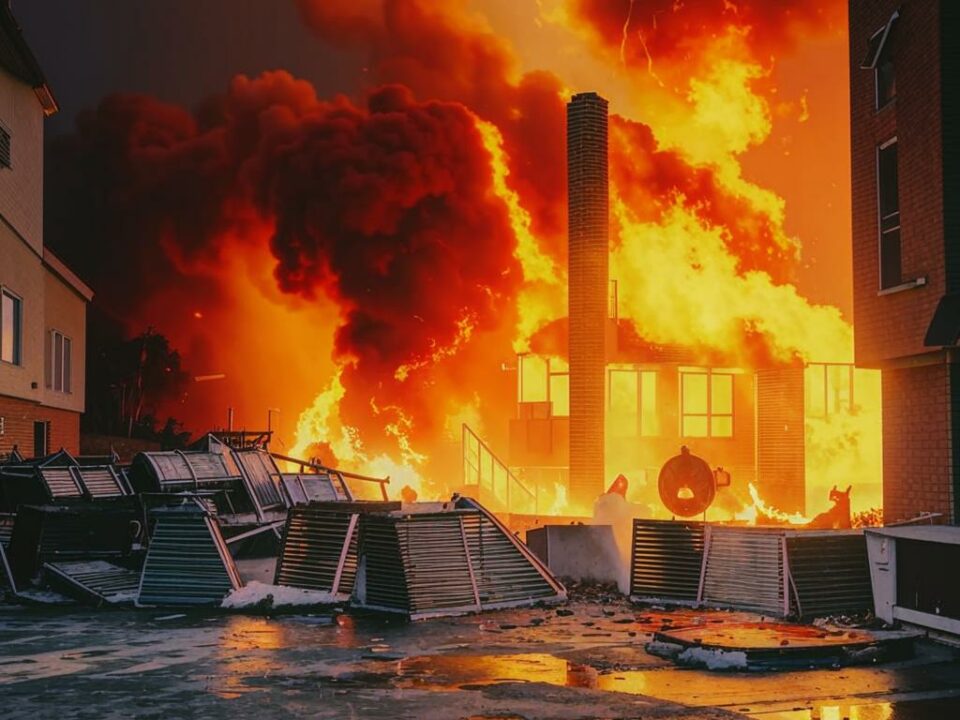How do Wildfires Start and Spread: Most Common Causes
The next US fire season (June to September) is just around the corner, and Colorado holds the third place in the rank of the most wildfire-prone states with up to 373,900 properties at risk. Find out what causes a wildfire, whether or not your area is a conducive environment for the fast spread of fire, and what proactive measures can minimize potential damage to your property.

How do wildfires start?
A wildfire is an unplanned and uncontrolled burning of wildland vegetation that can cause severe damage to property and take human lives. To start and spread, it needs a so-called fire triangle: oxygen, heat, and fuel.
According to U.S. Drought Monitor, most part of Colorado territory has severe to extreme drought levels resulting in a prodigious amount of highly inflammable dried vegetation. Combined with oxygen available from the atmospheric air, it makes ideal conditions for a fire outbreak. The only missing piece is heat that can come either from natural elements or from human activity
Natural causes of wildfires.
- Lightning: the PNAS research confirms that lightning is the most common cause of wildfires in Colorado. It causes forest fires twice as frequently as all the other factors combined.
- Volcano eruption: is the least probable wildfire cause for Colorado, but the Dotsero area remains under USGS supervision.

Human causes of wildfires
- Campfire escape: lack of attendance, improper placement, careless accelerants use, and dozens of other factors can turn a pleasant recreation experience into a disaster (e.g., the NCAR fire that burned 190 acres).
- Arson: a criminal act of deliberately setting fire to public lands or property (e.g., the Hayman Fire that caused over $42 mil in housing losses).
- Power lines: the main cause of wildfires is wind blowing vegetation on high-voltage equipment or the conductor line cable break (e.g., the Boulder County wildfire that destroyed nearly 1,100 buildings).
- Vehicle use: flat tires, wiring malfunctions, collisions, careless refueling operations, or rock strikes (e.g., the Last Chance fire started by sparks from a tire blowout and burnt 45,000 acres).
- Debris burning: strong wind blowing fire or ambers out of the control burn area (e.g., the Fourmile Canyon: a poorly extinguished fire pit led to 172 structures destroyed).
- Smoking: carelessly discarded unextinguished cigarette ends or other smoking-related materials (e.g., in the Hi Meadow fire a cigarette caused over $15 million in damages).
- Fireworks: hot remains of a firework landing in dry vegetation (e.g. Douglas County grass fires started by firework display).

How do wildfires spread?
There are three main factors that determine how fast wildfires spread:
-
- Wind: The rule of thumb says that wildfire spreads at 10% of the prevailing open wind speed.
- Being on a slope: a 10% slope gradient doubles the speed of the fire, and 20% would quadruple it, according to wildfire researcher Rob Gazzard.
- Fuel: the more fuel there is, the faster flames spread.
What are the effects of wildfires?
Wildfires impact both the environment and human life. Here are some of the positive effects of wildfires and the negative ones:
- Soil fertilization: ashes are rich in calcium, magnesium, potassium, and phosphorous.
- Forest floor clear-out: surface litter gets converted into nutrients.
- Plant reproduction: pyrophilous plant seeds need high temperatures to germinate.
- New habitats: some animals, birds, and insects benefit from colonizing burnt areas.
- Fatalities: over 33,000 are killed by wildfires every year.
- Economic losses: last year’s US fire season damage is estimated up to $90 billion
- Destruction: 3,158 structures were destroyed in Colorado from 2005 to 2020.
- Pollution: smoke, propellant gases, and soot add to air pollution.
- Secondary hazards: erosion, flooding, landslides, including debris flows.
- Endangered species: loss of natural habitats leads to population decline.
Wildfire prevention tips and resources
Follow the restrictions Always check the local Bans and Danger map before starting any fires. Avoid any fire-involving and spark-inducing activities when it’s hot, dry, and windy.

Control your campfire
Follow the Smokey Bear guide to prepare, maintain, and extinguish your campfire in the safest way possible.

Use your vehicle with care
Not following a few simple rules can lead to a wildfire sparked by your car, lawnmower, or some other power equipment used outdoors.

Mind the fuel in your area
Regularly check your community's wildfire risk level and apply safe Fuel treatment practices on time.

Be prepared
Engage in the fire department’s educational events, e.g., the Ready, Set, Go! (RSG) Program to best prepares yourselves and your properties.

